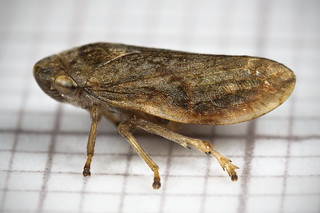- The bugs split from the Paleoptera (dragonflies, damselflies, and mayflies) and Neoptera (all other insects) 437 million years ago, before the Carboniferous period. This great age helps to explain the diversity and species richness of this group.
- Thrips (Thysanoptera) are the closest living relatives of true bugs and allies (Hemiptera).
- The results agree with evidence from the fossil record that the earliest hemipteroids fed on detritus, pollen, fungi, or spores (as do most modern bark lice and thrips). Plant-fluid feeding probably coincided with the origin of Hemiptera and evolved independently in thrips.
Phylogenomics and the evolution of hemipteroid insects PNAS USA, 21 Nov 2018) https://doi.org/10.1073/pnas.1815820115


No comments:
Post a Comment
Comments welcome, I will respond as soon as I can.